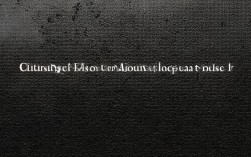Artistic value is a concept that transcends cultural and linguistic boundaries, shaping how we perceive and appreciate creative works. When applied to English composition, it elevates writing from mere communication to an expressive form of art. Understanding how to infuse artistic elements into writing not only enhances readability but also deepens the emotional and intellectual impact on readers.

The Intersection of Language and Art
Language itself is an artistic medium. The choice of words, rhythm, and structure can transform a simple sentence into a vivid image or a powerful emotion. In English composition, artistic value emerges through:
- Precision in Diction – Selecting the right words creates clarity and evokes specific feelings. For example, describing a sunset as "a molten gold horizon" paints a more striking picture than "a bright sunset."
- Rhythm and Flow – Well-crafted sentences have a musical quality, balancing short and long phrases to guide the reader naturally.
- Metaphor and Symbolism – These devices add depth, allowing abstract ideas to resonate more profoundly.
A writer who masters these techniques turns prose into poetry, engaging readers on multiple levels.
Emotional Resonance in Writing
Great writing connects emotionally. Whether in fiction, essays, or even academic papers, the ability to stir emotions distinguishes memorable work from forgettable text. Consider the following methods:
- Show, Don’t Tell – Instead of stating "she was sad," describe trembling hands or a voice breaking mid-sentence.
- Authentic Voice – Readers gravitate toward sincerity. A personal, relatable tone fosters trust and engagement.
- Universal Themes – Love, loss, ambition—these timeless topics create shared human experiences.
When writing in English, cultural nuances matter. Idioms, historical references, and social context must be handled thoughtfully to maintain authenticity.

Intellectual Depth and Originality
Artistic value also lies in originality and insight. Clichés and recycled ideas diminish impact, while fresh perspectives captivate. To cultivate intellectual depth:
- Research Thoroughly – Well-informed arguments or narratives carry more weight.
- Challenge Conventions – Unconventional structures or viewpoints can make writing stand out.
- Encourage Critical Thinking – Pose questions, present contradictions, and invite readers to reflect.
Academic and creative writing both benefit from this approach. A persuasive essay with well-reasoned points and elegant phrasing is as artistically compelling as a short story.
The Role of Aesthetics in Readability
Visual and structural elegance enhances artistic value. Even in digital formats, readability matters:
- Paragraph Breaks – Short, digestible sections prevent fatigue.
- Varied Sentence Lengths – Monotony dulls engagement; variation keeps interest alive.
- Strategic Punctuation – Em dashes, semicolons, and ellipses can alter pacing dramatically.
Online readers skim, so formatting must guide them effortlessly while preserving beauty in the prose.

Cultural and Historical Influences
English literature’s rich heritage offers endless inspiration. From Shakespeare’s wordplay to Orwell’s stark realism, each style carries artistic lessons. Modern writers can:
- Study Classic Works – Understanding masterpieces reveals techniques that endure.
- Adapt Timeless Techniques – Alliteration, irony, and allegory remain powerful tools.
- Blend Traditions – Global influences enrich contemporary English writing.
Respecting tradition while innovating ensures writing remains relevant and artistic.
Practical Applications for Writers
To integrate artistic value into English composition:
- Revise Ruthlessly – First drafts are raw; refinement uncovers brilliance.
- Read Widely – Exposure to diverse styles broadens creative horizons.
- Experiment Fearlessly – Unusual formats or hybrid genres can yield surprising results.
Artistic writing isn’t confined to "literary" works—even technical or business writing gains power from elegance and clarity.

The Lasting Impact of Artistic Writing
Words linger when crafted with care. A beautifully constructed sentence can inspire, provoke, or comfort long after reading. In an age of fleeting digital content, artistic value ensures writing endures.
For website visitors exploring English composition, recognizing and cultivating this artistry transforms writing from functional to extraordinary. Whether aiming to persuade, entertain, or inform, the principles of artistic value elevate every word.
Writing is more than communication—it’s an art form waiting to be mastered.


